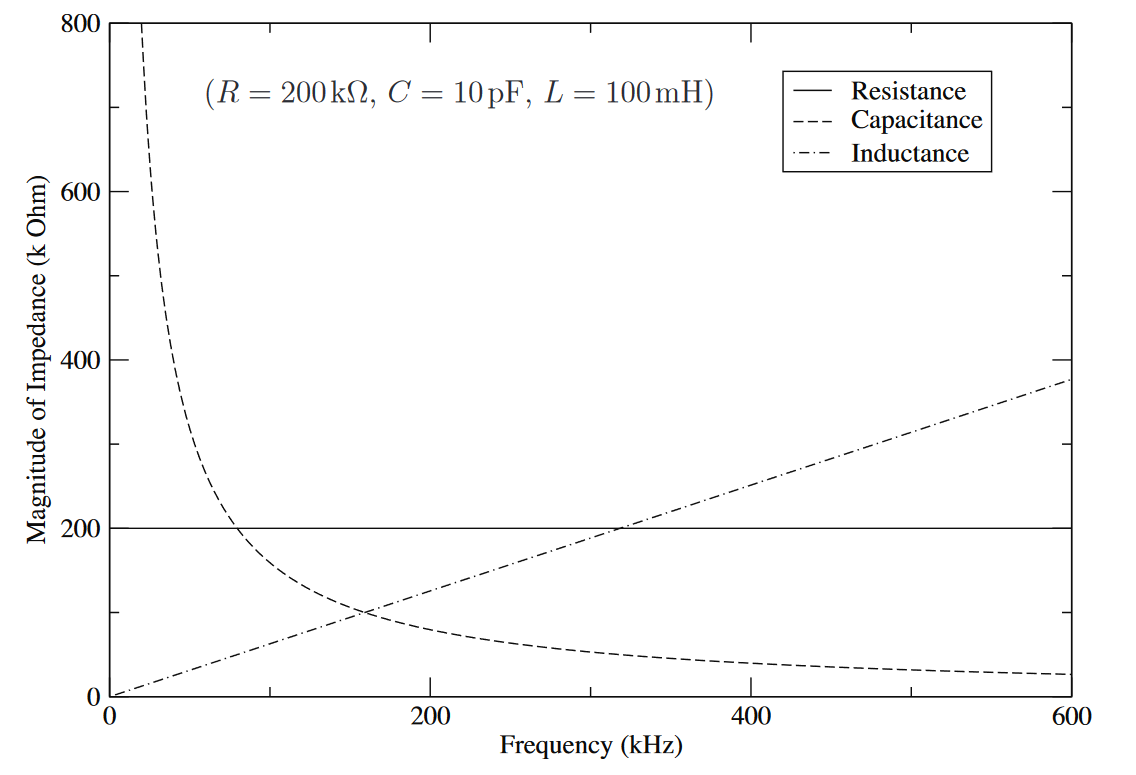In phasor analysis, impedance is a complex number. The reciprocal of impedance is admittance. In standard form, it is:
is called the resistance and the imaginary part is called the reactance. Both are in units of ohms. But note that is not referring to an actual resistor (necessarily), it is just the real part of the complex number. Impedance isn’t a phasor.
In standard form, for a resistor, , where is positive.
For an inductor, both and are positive.
For a capacitor, is positive and is negative.
For impedances in series, we have:
For impedances in parallel, we have:
Addendums
The magnitude of the impedance depends on the frequency for both the inductor and capacitor. Frequency plotted against impedance is:
 We can derive a few key implications from this. For IC design at high-frequencies, this should be noted.
We can derive a few key implications from this. For IC design at high-frequencies, this should be noted.
- As frequency approaches 0 (DC state):
- The inductor impedance approaches 0 (short circuit).
- The capacitor impedance approaches infinity (open circuit).
- As frequency approaches infinity:
- The inductor impedance approaches 0 and becomes infinity (OC).
- The capacitor impedance approaches 0 (SC).
Standard impedance values in electronics and PCB design is .